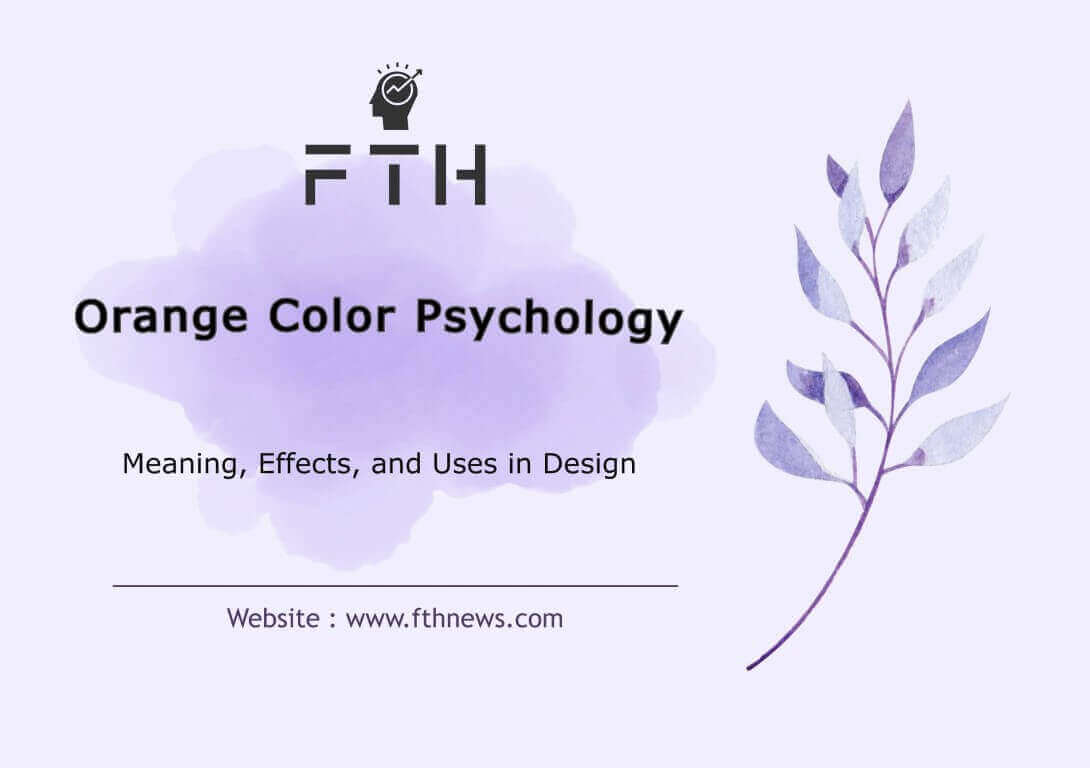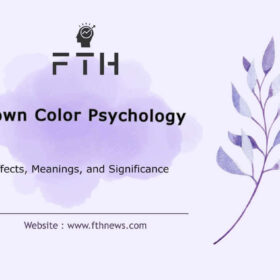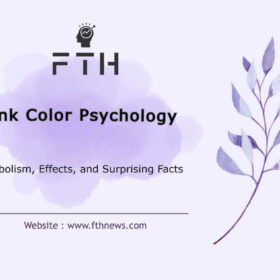
Orange Color Psychology: In the vibrant world of color psychology, orange stands out as a unique hue that blends the warmth of red and the optimism of yellow. Whether you’re designing a website, branding a product, or simply curious about the impact of colors, understanding the psychology behind orange can be a game-changer. In this article, we delve deep into the meanings, effects, and practical applications of orange, providing you with insights to harness its power effectively.
The Psychological Impact of Orange
Orange is a color that exudes energy, enthusiasm, and warmth. It is a dynamic hue that blends the vigor of red with the optimism of yellow, creating a powerful psychological impact. Here’s how orange influences our emotions and behaviors:
Orange Color Psychology: Creativity and Enthusiasm
Orange stimulates mental activity and encourages socialization. Its vibrant nature makes it an ideal color for environments where brainstorming and innovation are key. Whether in a creative workspace, a classroom, or a collaborative meeting room, orange can spark creativity and enthusiasm, fostering an atmosphere of lively engagement and dynamic thinking.
Orange Color Psychology: Emotional Balance
Orange combines the physical energy of red with the cheerfulness of yellow, promoting a sense of well-being and emotional balance. It’s often used in settings that aim to uplift and energize, such as gyms, wellness centers, and motivational spaces. The warmth of orange can help alleviate feelings of boredom or lethargy, infusing a sense of vitality and positivity.
Orange Color Psychology: Appetite Stimulation
Similar to red, orange is known to increase appetite. This makes it a popular choice in the food and beverage industry, particularly in marketing campaigns and restaurant interiors. The color orange can enhance the dining experience by making food appear more appealing and stimulating hunger. This is why many restaurants, cafes, and food packaging incorporate orange to attract and retain customers.
Orange Color Psychology: Motivation and Extroversion
In psychology, orange is a symbol of motivation and extroversion. It provides emotional strength during difficult times, helping individuals overcome disappointment and fostering a positive outlook on life. In challenging economic conditions, orange can be a motivating force, encouraging hard work and resilience. It inspires a sense of adventure and risk-taking, making it a suitable color for brands and environments that promote competence, independence, and social interaction.
Orange Color Psychology: Social Connectivity
Orange is associated with social communication, being warm and welcoming. It encourages people to engage in conversation, making it an excellent choice for social spaces like living rooms, cafes, and networking events. The friendly and inviting nature of orange can make environments feel more inclusive and interactive.
By incorporating orange thoughtfully into various aspects of design and branding, you can create spaces and experiences that harness its powerful psychological benefits. Whether you’re aiming to stimulate creativity, promote emotional well-being, increase appetite, or enhance social interaction, orange offers a versatile and impactful tool in the realm of color psychology.
Positive Effects of Orange
Orange is a color synonymous with high energy and a vibrant social environment. Its dynamic nature brings several positive psychological effects:
- High Energy and Vitality: Orange invigorates and energizes both the mind and body. It is often used in environments where a boost of energy is needed, such as gyms, offices, and social gathering spaces. This energy can help improve focus, productivity, and overall enthusiasm.
- Enhanced Creativity: The stimulating properties of orange make it an excellent choice for creative spaces. Whether it’s in an art studio, a classroom, or a brainstorming session, orange can inspire creativity and out-of-the-box thinking, encouraging individuals to explore new ideas and perspectives.
- Social Interaction: Orange fosters a lively and engaging social atmosphere. Its warm and inviting hue encourages people to interact and communicate, making it perfect for social spaces like cafes, lounges, and event venues. This can lead to stronger relationships and a more cohesive community.
- Attention-Grabbing: Due to its brightness and high visibility, orange is frequently used in safety equipment, signs, and clothing. NASA’s astronaut suits, for example, are orange to ensure visibility in space and during rescue missions. This attention-grabbing quality ensures that important information and individuals stand out and are easily noticed.
- Emotional Upliftment: Orange promotes a positive attitude and emotional upliftment. Its warm tones can help alleviate feelings of depression or anxiety, providing a comforting and joyful presence that can improve overall mental health.
Negative Effects of Orange
While orange has many positive attributes, its powerful nature can also have some negative effects if not used carefully:
- Overwhelm and Fatigue: When used excessively, orange can become overwhelming and lead to sensory fatigue. Its intense brightness can overstimulate the eyes and mind, causing discomfort and reducing the ability to relax. This is why it’s important to balance orange with more calming colors in interior design and branding.
- Association with Danger: Orange is often used to signal caution and danger, such as in hazard lights, traffic cones, and warning signs. While this makes it effective for safety purposes, it can also evoke a sense of alertness or anxiety when encountered frequently.
- Pride and Overconfidence: The association of orange with social interaction, optimism, and fun can sometimes lead to negative traits like pride and overconfidence. Individuals or brands that heavily use orange might be perceived as overly assertive or self-important, which can impact relationships and brand perception.
- Hedonism and Deception: In some contexts, orange can be associated with hedonism and deception. Its exuberant and indulgent nature might suggest a focus on pleasure and enjoyment at the expense of deeper, more meaningful values. This can lead to perceptions of superficiality or insincerity.
By understanding both the positive and negative effects of orange, you can use this vibrant color effectively and appropriately. Whether in design, branding, or personal spaces, the strategic use of orange can harness its energetic and social benefits while mitigating potential downsides.
Orange Color Psychology in Business and Branding
Orange is a powerful tool in business and branding due to its vibrant and attention-grabbing nature. Here’s why many successful brands choose orange and how it can be effectively utilized:
- Attracting Attention: Orange is highly visible and instantly captures attention. This makes it an excellent choice for brands that want to stand out in crowded markets. Its brightness ensures that logos and marketing materials are noticed quickly and remembered easily.
- Fun and Playful Image: Orange exudes a sense of fun, energy, and playfulness, making it ideal for brands targeting children or promoting playful and adventurous lifestyles. Its cheerful and lively vibe can create a positive and engaging brand personality.
- Energetic and Invigorating: The dynamic nature of orange conveys enthusiasm and vitality. Brands that want to convey energy, excitement, and a sense of forward momentum often choose orange to reflect these attributes. It’s particularly effective for promoting products and services related to fitness, outdoor activities, and entertainment.
- Emotional Connection: Orange is warm and welcoming, fostering a sense of friendliness and approachability. Brands that use orange can create an emotional connection with their audience, making customers feel more comfortable and inclined to engage.
- Versatility in Branding: Orange’s versatility allows it to be used in various industries. It works well for technology companies, food and beverage brands, entertainment industries, and more. Its ability to evoke different emotions depending on the shade and context makes it a flexible choice for diverse branding needs.
Prominent Examples:
Several well-known companies have successfully incorporated orange into their branding:
- Fanta: The bright orange logo of this popular beverage brand perfectly reflects its fun and refreshing nature.
- Shutterfly: Using orange in its branding, Shutterfly conveys creativity and warmth, appealing to users creating personalized photo books and gifts.
- SoundCloud: The orange logo of this music streaming platform stands out and conveys the energetic and dynamic nature of music discovery.
- Firefox: The orange fox in the Firefox logo symbolizes speed, playfulness, and the open-source spirit of the web browser.
- Mastercard: The iconic overlapping circles of red and orange in the Mastercard logo convey a sense of connectivity and partnership.
- VLC Media Player: The orange traffic cone logo is easily recognizable and signifies safety, reliability, and the ability to handle multiple media formats.
Incorporating orange into your business and branding strategies can significantly enhance visibility, convey a sense of energy and playfulness, and create a strong emotional connection with your audience. Whether you aim to attract attention, evoke positive emotions, or promote an energetic brand image, orange offers a versatile and impactful color choice. By leveraging the psychological power of orange, you can create a memorable and engaging brand that resonates with your target audience.
Orange in Interior Decoration
Using orange in interior decoration can transform spaces by adding warmth, energy, and a touch of boldness. Here are some tips on how to effectively incorporate orange into home and commercial interiors:
- Radiates Warmth and Happiness: Orange exudes a sense of warmth and happiness, making any space feel more inviting and cozy. This makes it a great choice for living rooms, kitchens, and other areas where people gather.
- Energizing and Uplifting: The bright and lively hue of orange can uplift spirits and energize occupants. It’s particularly effective in spaces where a boost of energy is needed, such as home offices, gyms, and children’s play areas.
- Balanced Use: While orange is often considered too bold for home spaces, it can create a pleasant atmosphere when properly coordinated with other colors. Pairing orange with neutral tones like black, white, gray, cream, brown, and beige can balance its intensity and create a harmonious look.
- Creative Combinations: Combining orange with its family colors, such as red and yellow, can produce a warm, monochromatic palette. Alternatively, using contrasting shades like bright and pale orange together can create a striking and eye-catching effect. These combinations can be used in accent walls, furniture, and decorative elements to add a pop of color without overwhelming the space.
The Effect of Orange on the Body
Orange has several beneficial effects on the body, supported by research findings:
- Immune System: Orange strengthens the immune system, helping the body to fight off illnesses more effectively.
- Digestive and Kidney Functions: The color orange is known to improve digestive health and support kidney function, promoting overall well-being.
- Brain Activity: Orange increases oxygen supply to the brain, enhancing brain activity and improving cognitive functions. This includes strengthening memory and reducing the risk of neurological diseases like Alzheimer’s and dementia.
- Creativity: The color orange boosts creativity, making it a valuable addition to environments where innovation and creative thinking are encouraged, such as studios, classrooms, and offices.
- Appetite Stimulation: Orange is known to stimulate the appetite, making it a practical choice for dining areas and food-related marketing. Its warm and inviting nature can make food appear more appealing and increase the likelihood of people feeling hungry.
By understanding and leveraging the psychological and physiological effects of orange, you can create spaces that are not only visually appealing but also promote well-being, creativity, and social interaction. Whether it’s in children’s environments, interior decoration, or branding, the strategic use of orange can have a powerful and positive impact.
What Does the Color Orange Symbolize?
In psychology, orange is a potent symbol of motivation and extroversion. This vibrant and warm color imbues us with significant emotional strength, particularly in challenging times, helping us overcome disappointment and maintain a positive outlook. Here are some key aspects of what orange symbolizes:
Motivation and Positivity:
Orange is often used in environments that need a boost of energy and optimism. During difficult economic conditions, incorporating orange into spaces can be a motivational force, encouraging perseverance and hard work. Its bright and lively nature helps individuals see the bright side of life, fostering a resilient and proactive mindset.
Passion for Life:
Orange is synonymous with a zest for life. It’s a color that embodies adventure, enthusiasm, and a willingness to take risks. People who resonate with orange are often seen as dynamic and adventurous, always seeking new experiences and challenges. This makes orange a perfect color for brands and spaces that aim to inspire a sense of excitement and daring.
Competence and Independence:
Orange inspires feelings of competence and independence. It is a color that supports self-confidence and self-reliance, making it ideal for environments where these qualities are nurtured and valued. Whether in educational settings, workplaces, or personal development spaces, orange can help cultivate a strong sense of individual capability and autonomy.
Social Communication:
Known for its warmth and welcoming nature, orange enhances social interaction and communication. It is a color that encourages people to engage in conversation and connect with one another. This makes orange an excellent choice for social spaces such as living rooms, cafes, networking events, and community centers where interaction and dialogue are encouraged.
Emotional Resilience:
Orange provides a sense of emotional resilience. It can uplift spirits and provide the emotional strength needed to navigate through difficult times. This resilience is particularly beneficial in therapeutic environments and counseling spaces, where emotional support and positive reinforcement are crucial.
By understanding and utilizing the symbolism of orange, you can create environments and experiences that harness its motivational and extroverted energy. Whether it’s through interior design, branding, or personal expression, orange can be a powerful tool to inspire positivity, adventure, competence, and social connectivity.
The Meaning of the Most Important Orange Color Spectrums
Orange is a versatile color with various shades, each carrying its unique psychological implications. Here are some of the most significant orange color spectrums and their meanings:
- Peach: This soft and soothing shade of orange inspires good behavior and makes people feel comfortable. It’s often used in environments where a calming yet uplifting atmosphere is desired, such as in healthcare settings or living spaces.
- Golden Orange: This rich and vibrant hue enhances vitality and self-control. It exudes warmth and stability, making it an excellent choice for spaces that aim to foster a sense of balance and well-being.
- Amber: Known for its warm and earthy tone, amber increases self-confidence and self-esteem. It’s a grounding color that can help individuals feel more secure and assured in their actions.
- Dark Orange: This intense shade represents pride, tension, and aggressive self-expression. It can be a powerful motivator but should be used sparingly to avoid creating an overwhelming or confrontational atmosphere.
- Bright Orange: Symbolizing overconfidence and ambition, bright orange indicates an opportunistic person who takes advantage of any situation. It’s a bold and dynamic color that can inspire action but may also lead to perceptions of arrogance if overused.
Orange Color Psychology and Personality
If your favorite color is orange, it might suggest several intriguing personality traits:
- Attention to Detail and Resilience: You pay close attention to details and can easily overcome life’s challenges. Your resilience helps you navigate obstacles with confidence.
- Indecisiveness and Unpredictability: While you are adaptable, you may sometimes struggle with making decisions and can be unpredictable.
- Sociability and Energy: You thrive in social interactions and draw energy from being around others. Your presence is often invigorating and uplifting to those around you.
- Positivity and Ambition: You are highly energetic, positive, optimistic, and ambitious. Your outlook on life is generally upbeat, and you have a drive to achieve your goals.
- Living in the Present: You focus on the present moment, rarely dwelling on the past. This trait helps you stay engaged and proactive.
- Boldness and Challenge-Seeking: Your bold personality constantly seeks new challenges. You are not afraid to step out of your comfort zone and try new experiences.
- Patience and Acceptance: You are patient and accepting of others as they are, which makes you a supportive and understanding friend.
- Risk-Taking and Adventure: You have a high tolerance for risk and love adventure. Activities like nature tourism, mountain climbing, and adventure sports excite you.
- Outgoing and Social: You enjoy gatherings and meeting new people. Your social nature makes you a great networker and community builder.
By understanding the diverse meanings and psychological impacts of the various shades of orange, as well as the personality traits associated with a preference for this color, you can better utilize orange in personal expression, design, and branding. Embrace the vibrant and dynamic nature of orange to create spaces and experiences that are engaging, motivating, and socially enriching.
Orange and Children
Research shows that colors can significantly influence children’s moods and cognitive development. Warm colors like orange are particularly effective in stimulating different parts of the brain, leading to various positive effects:
- Energizing and Uplifting: Orange is a highly energizing color that can invigorate children and boost their enthusiasm. It creates a lively and dynamic environment, making it ideal for playrooms, classrooms, and other spaces where activity and interaction are encouraged.
- Boosting Creativity: The vibrant nature of orange stimulates creative thinking and imagination. By incorporating orange into art rooms or learning spaces, educators and parents can foster an environment that encourages children to express themselves and explore new ideas.
- Mood Enhancement: Orange has a cheerful and warm quality that can enhance a child’s mood. It promotes feelings of happiness and well-being, making children feel more comfortable and relaxed in their surroundings.
Conclusion
Orange is a dynamic color with the power to influence emotions, behavior, and perceptions. By understanding its psychological impact and cultural significance, you can leverage orange to create compelling designs and effective marketing strategies. Whether you’re aiming to energize a space, attract customers, or simply explore the world of color psychology, orange offers a vibrant palette of possibilities.
Embrace the warmth and energy of orange, and watch how it transforms your environment and engages your audience.














